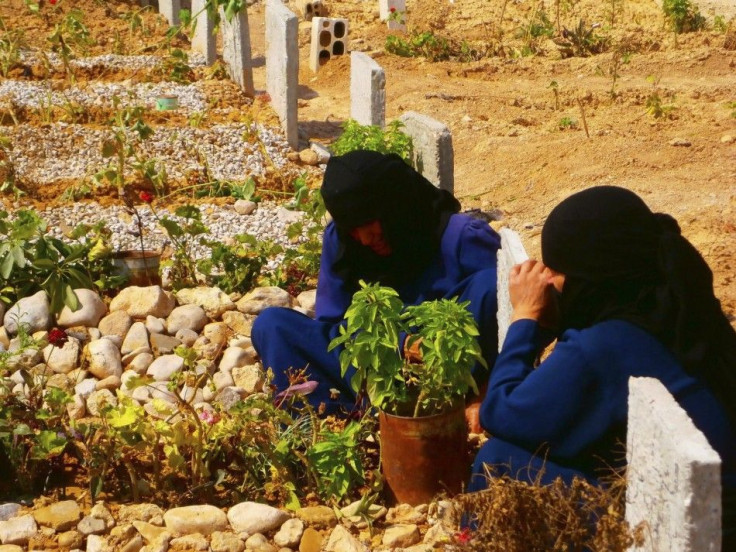Assad Using Cluster Bombs On Syrian Civilians, Says Human Rights Watch

Human Rights Watch has confirmed for the first time claims that the Syrian government has used cluster bombs against its civillian population during the 17-month conflict.
"We have been able to verify the use of cluster bombs," Nadim Houry, regional Deputy Director of Human Rights Watch, told the International Business Times in Beirut, Lebanon.
The verification comes before the third meeting of states parties to the Convention on Cluster Munitions, to be held in Oslo, Norway, on September 11.
Houry added that there was no evidence of cluster bomb use in the ongoing major clashes in Syria's biggest city and commercial hub, Aleppo.
Last month, the organization announced its suspicion that Damascus has used the controversial weapon against residents in Jabal Shahshabu, a mountainous area near Hama. It cited activist videos showing unexploded Soviet-made cluster munition, but at the time HRW was unable to verify the authenticity of the footage.
In one video, a man can be seen handling with his bare hands the explosives, apparently unaware of the danger that they might detonate at the slightest movement.
Cluster bombs are controversial because they can cause indiscriminate fatalities and damage to property. One cluster bomb includes dozens or hundreds of so-called "bomblets" packed inside of it. The cluster explodes before it hits the ground, scattering the small bomblets over an area the size of a football field. Adding to the controversy, sometimes the small bomblets do not explode on impact and then act like a land mine. Sometimes they remain visible to the naked eye, but in other cases they become embedded in shallow earth, becoming an even greater danger.
Many reports describe children finding and playing with them before the bomblets explode, causing death or major injury. Almost one third of cluster bomb victims are children, according to Handicap International, a London-based aid organization.
In response to the controversy on cluster bombs, more than 100 countries have banned their use through the Convention on Cluster Munitions. The agreement became binding international law in August 2010, but Syria is not a signatory to it.
The United States, also not a signatory to the Convention, used cluster bombs early in the conflict in Afghanistan in 2001. HRW estimates that hundreds of Afghan civilians were killed as a result.
Rising controversy at the time over the use of clusters in Afghanistan may have led the U.S. to limit its use. According to HRW, very few civillians were killed due to air-dropped clusters in the Iraq invasion in 2003.
In a more recent conflict, Israel fired four million cluster bombs into southern Lebanon during the one-month war in 2006, according to the UN. An estimated one million of these bomblets remained unexploded, posing a hazard to civillian movement. Mounting international pressure eventually forced Israel to hand over to Lebanon detailed information about the cluster bombs and their locations to help with the cleanup.
The bombs used by the Syrian regime are Soviet-made, according to military experts from Human Rights Watch and the Geneva International Center for Humanitarian Demining.
From the footage that HRW verified, the experts identified at least 15 unexploded AO-1Sch small bomblets that must have been delivered by a larger bomb known as RBK. In another video, there were remnants from a high-explosive unguided bomb known as OFAB 250/275. There was also footage of a cluster bomb canister that could have had the bomblets packed inside of it. It is known as the RBK-250 series.
© Copyright IBTimes 2024. All rights reserved.





















